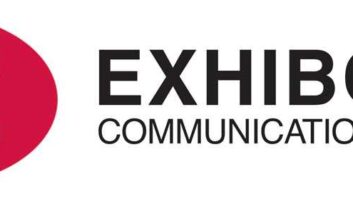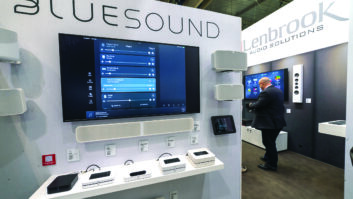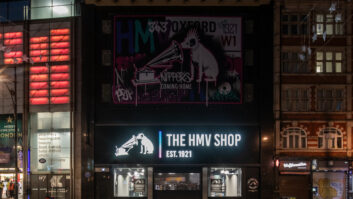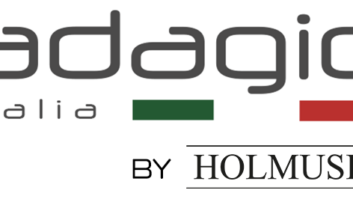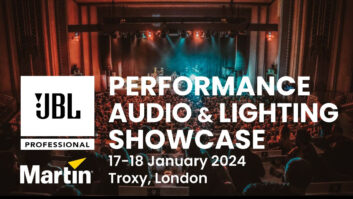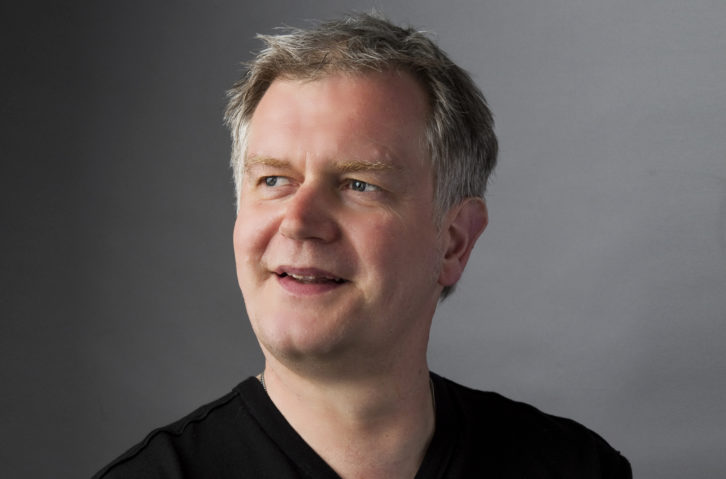
You left Biamp last July after 27 years, and a few months after the acquisition by Highlander Partners, was it a direct reaction to the acquisition or was it something you had been looking to do for a while?
No it was a direct reaction to that. It was clear that Biamp – post-acquisition – was going to be a very different company to Biamp – pre-acquisition. Not necessarily a worse company, but just a different company. And Rashid [Skaf] came in with his agenda and for some people in the company that will work well and for some of us it was not the company that we had built over the last quarter of a century. And so it was a mutual decision that my future would be better served somewhere else.
Before the acquisition were you thinking there was still a lot that you wanted to achieve at Biamp?
I think there was still a lot we could have done. The company was still growing very fast, we were very profitable. We were owned by a family-owned company who basically, after owning us for nearly 30 years, decided that they didn’t want to own companies anymore. They sold both of the companies they owned. It was beyond our control really and Biamp was way too big for a management buyout or something like that. Our future was to some extent determined by things out of our control, and it was not at all because of the performance of the company. It was a generation change in the family that had previously owned the company and they’ve been fantastic bosses for us for 30 years. They just didn’t want to be in the owning companies business anymore. I think being owned by a private equity [firm] is a very different proposition than being owned by a family. You see it all over the industry and the priorities change. It’s part of business really.
‘It’s kind of like being married for 27 years and going out dating again’
How does your mentality change now – is the start-up mentality completely different to that of an industry leader?
Yes it is really. When you have been somewhere for 27 years, it is kind of like being married for 27 years and going out dating again and you think – am I just old and fat and white-haired and no one is going be interested in me, or do I have something to offer? And it was kind of like that for me.
The big thing was about 15 years ago, Matt Czyzewski and I had come across a company called Slim Devices, who made the very first network music player. It was before streaming services and I bought one of these things called a SLIMP3 as a way of getting the files off my computer into my Hi-Fi system and it became apparent that this was an interesting proposition.
Biamp looked at that and putting that functionality into our audio DSPs and the whole purpose of that – at that time – was that Slim were talking about mirroring files in the cloud – kind of like an iCloud, but 15 years ago – either mirroring files or mirroring the metadata. We were talking to the guys at Slim to do that, and then they were bought by Logitech. And Logitech wasn’t really interested in B2B stuff, certainly in those days. So those negotiations stopped and we all forgot about it and got on with our lives.
And when I was introduced to the people at Lenbrook and the opportunity came about, I suddenly thought ‘In the last 15 years nobody’s done this – why has nobody done this?’ Why has no one made hardware for streaming devices for commercial spaces? I started calling a whole load of people – consultants, distributors, integrators saying ‘what am I missing here? Why has no one done this?’ And everyone said ‘I don’t know, I haven’t thought about that before, but you’ve got a point’.
It gradually, over a number of weeks, became apparent that there was this hole in the marketplace and that was really interesting to me. A combination of the fact that the opportunity to go back to the beginning and do something again and rebuild a company with the same sort of ethos as Biamp – a really people-focused company, one that was fun to do business with was really attractive. Plus the opportunity of working in this area and being first to market with a new category of products was really interesting.
There’s a third element to it that is important to me. I used to be a musician, and I used to have a little record company and studio – decades ago, and a lot of my friends are still musicians and there is this question of artist rights in the age of streaming. A number of my friends – Imogen Heap and Zoë Keating, Amanda Palmer and others – are agitating in different ways for a different revenue split and being first to market with commercial hardware for streaming services puts you in a position to have a little voice to the streaming services saying ‘hey guys you know as you roll out business services you might want to think that you’ve got an opportunity now to address this situation a little bit and charge more for those services, which will benefit you, but will also benefit the musicians whose work we’re all listening to’. That was a subsidiary thing, but it is of great interest to me.
‘It gradually became apparent that there was this hole in the marketplace’
You say there’s a hole in the market for this, so do you expect things to move pretty quickly as people realise that this is something completely new?
I suspect it will move fairly quickly. What’s happening at the moment is that people are doing it in a whole load of different ways. People are using products actually designed for consumer/residential application in commercial spaces. And it is not really designed for purpose. For example if you go into a restaurant with streaming equipment from the consumer space you have the app on your phone and you have access to their wireless network, but there’s nothing to stop you going in and playing your own music. And a lot of people don’t realise that, but there is no security in any of these systems.
There is another element to it, which is that there are beginning to be streaming business music services available. If you are a large hotel chain, you will go to Mood Media or PlayNetwork or Musicstyling and you get a curated stream for your chain of stores or chain of hotels and that includes advertising and messaging and it is downloaded typically once a week or once a month, with rights paid content.
That doesn’t work well for a chain of three restaurants. It is way too expensive to go to someone like Mood media and it is not flexible enough. And nowadays streaming is a realistic alternative. There are services coming available that allow commercial establishments to play rights paid music, particularly in North America.
Let’s just use England as an example. You could have a bar – say you pay PPL for artist and record company rights and PRS for composer and publisher rights and then you theoretically have the right to play stuff in your bar whether it be a live band or a CD. You are technically not allowed to play Spotify and Pandora, not because of the performing rights issue, but because of the terms and conditions of their content from their personal services. All of this is a nightmare to your average business owner. I think the statistics globally are only about 20% of businesses actually pay the PROs and if it’s bundled with the content, then it becomes 100%, which is a good thing for all concerned.
There’s a changing environment in terms of the content as well as the hardware that it is played over and I think it is responsible to be aware of both. We could just say we are a company that makes streaming hardware, and just like a company that makes CD players we are not responsible for what you do with that. But I want to be a little more proactive than that, we can’t be the police but I want to have a bit more of a place in the conversation around what digital rights look like in commercial spaces going forward.
Can you tell me a bit about the Lenbrook Group.
It is a mid-sized, private and globally minded business overseeing a group of companies based in Toronto and they own three Hi-Fi brands – NAD Electronics, PSB Speakers and Bluesound wireless multi-room players. And they have long wanted to get into the commercial space and we were introduced by a mutual Australian friend of ours. What I’m doing is heading up a fourth company called Bluesound Professional, which to begin with takes products from each of those three other companies and modifies them to be commercially suitable under a separate range called Bluesound Professional. As time goes on the Bluesound Professional line will veer away from the residential side of it with a new product roadmap that has products that are more and more fit for purpose for the hospitality/commercial sector.
I’m coming into this small group of companies, which feels very much like Biamp felt a few years ago. A really tight, passionate team of people. And I have this remit to build out a commercial side of their business and it’s just glorious fun.
Where do systems integrators fit into the Bluesound Professional model going forward?
This is one of the reasons that consumer focused brands have not done this, because the commercial side of the business is totally separate to the residential and even custom install CEDIA bit. There is the Hi-Fi stores that do custom install as well, and then there’s pretty much a hard gap, and then there is the commercial market.
There have not been products available for those people. If you are a systems integrator and you want to use a streaming player at the moment, you have got to go to a Hi-Fi store or go online and put it in. You have no protection against the bar owners saying ‘well I’ve got a mate at the local Hi-Fi store I can get a great price’. And the equipment is not fit for purpose, so you have got to shoehorn it in. Whereas what we are doing is making a specific range of equipment that is not available to the residential sector, that is designed from the ground up for the commercial sector and only available to the commercial sector through the commercial sales channels.
What are your short, mid and long-term aims and goals for Bluesound Professional?
Short-term is a first release suite of products that we showed at ISE and we are shipping in a few months time and building our global distribution network and launching that series of products to the market. At the same time, I’m in discussions with musicians and some of the streaming service companies to foster relationships. We already support SOUNDMACHINE, that is one of the services already available on the platform, and we are talking to other providers.
A lot of the long-term vision is for an architectural change. What people are used to doing now is putting in source material to a DSP and running it around the place with Dante or CobraNet or Q-LAN or AVB, and taking it to endpoints. Whereas in in the age of streaming you do not need to do any of that – your endpoints are your decoders.
What we’re looking to do is build out a whole range of equipment, from streaming devices to loudspeakers. The underlying platform is called BluOS and it is what underpins Bluesound Professional and Bluesound and some products from different Hi-Fi manufacturers. It is bringing a 21st century architecture into the hospitality space. With Biamp I was really focused on the enterprise space, this is focused on a different market area and bringing modern architecture to that and hopefully being able to influence how the content providers are recompensed.
